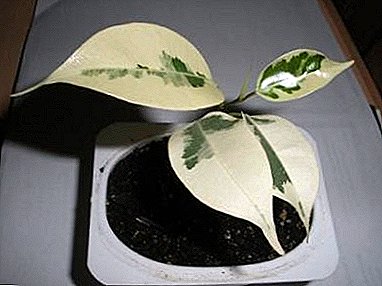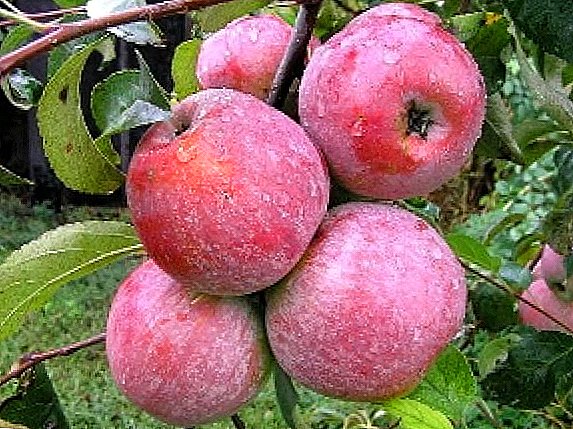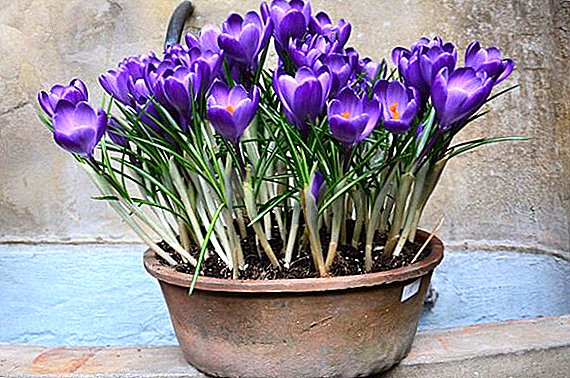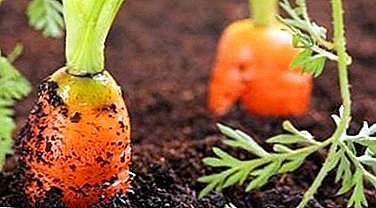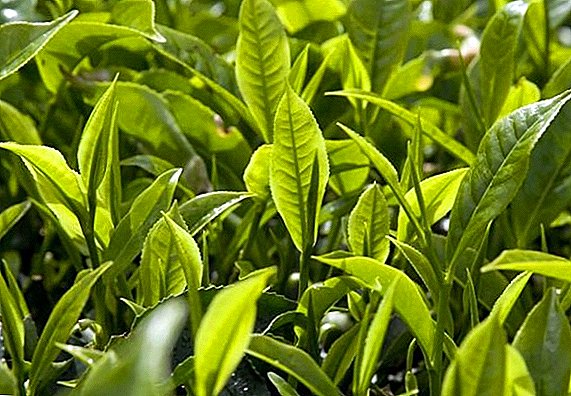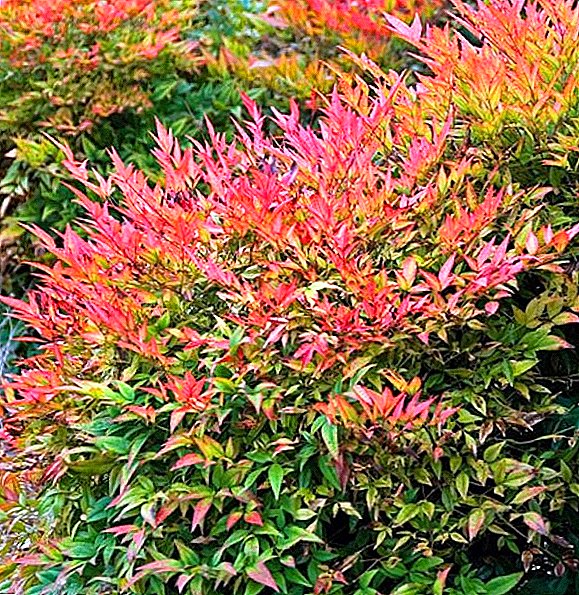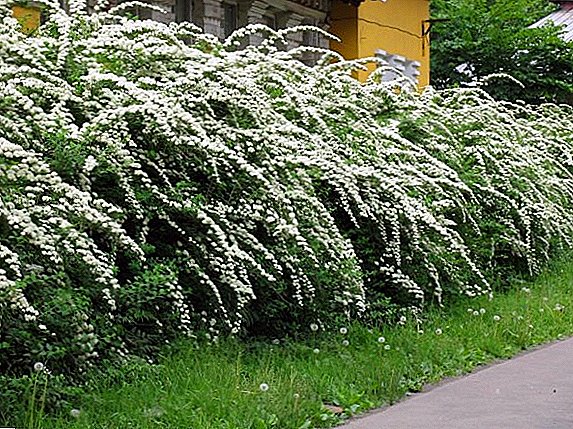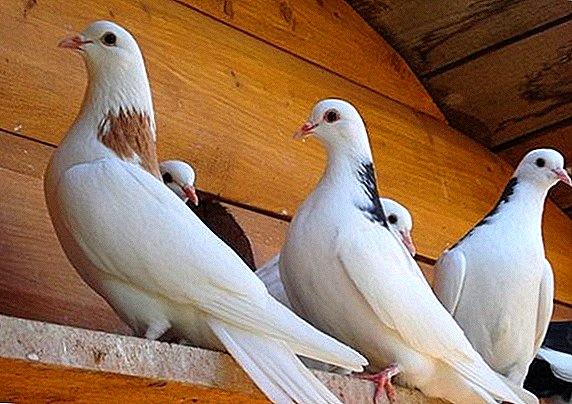 Clematis is able to surprise and charm everyone with juicy greens, beautiful inflorescences, various forms, unusual shades, delicate smell. A resident of the subtropics is well acclimated in Europe and has more than 300 species. A miracle flower can, like grass, decorate your lawn, weave a gazebo with a vine or a tree to grow on the balcony. Clematis will delight you with its flowering 3-4 months.
Clematis is able to surprise and charm everyone with juicy greens, beautiful inflorescences, various forms, unusual shades, delicate smell. A resident of the subtropics is well acclimated in Europe and has more than 300 species. A miracle flower can, like grass, decorate your lawn, weave a gazebo with a vine or a tree to grow on the balcony. Clematis will delight you with its flowering 3-4 months.
Did you know? The ancient Greeks called any climbing plant - "Clem." It is from this word that the name clematis comes. Among the popular names are known - warthog, clematis, grandfather curls, etc.
Clematis, description of flowers
 Clematis are popular - different varieties of clematis with photos and descriptions can be found on specialized sites and in horticultural literature. The perennial plant of the family of buttercups is presented in various life forms (grass shoots 30–40 cm high, shrubs and semi-shrubs (up to 140 cm), leaf-liands (up to 10 m). In different species, the leaves are simple and complex, with a pinnate and odd-pinnate, trifoliate and twice trifoliate, green and purple. The root system is developed: it can form real "beards" - 5 kg in weight and 1.5 m in diameter, it can be single-rod. The roots have a pungent smell.
Clematis are popular - different varieties of clematis with photos and descriptions can be found on specialized sites and in horticultural literature. The perennial plant of the family of buttercups is presented in various life forms (grass shoots 30–40 cm high, shrubs and semi-shrubs (up to 140 cm), leaf-liands (up to 10 m). In different species, the leaves are simple and complex, with a pinnate and odd-pinnate, trifoliate and twice trifoliate, green and purple. The root system is developed: it can form real "beards" - 5 kg in weight and 1.5 m in diameter, it can be single-rod. The roots have a pungent smell.
Important! Clematis is very sensitive to winds - their shoots are broken and tangled, the flowers are damaged.
 The main attraction of this plant is flowers and buds! The size of the flower varies from 4 to 25 cm, the color palette is wide - it has dozens of different shades (from white-bluish to dark blue, from pinkish to purple-scarlet, etc.). A special color gives the flower of the climax "spider" - contrasting stamens and pistils that have grown in the center. The total flowering time is 3-4 months, a single flower lives from 10 to 21 days.
The main attraction of this plant is flowers and buds! The size of the flower varies from 4 to 25 cm, the color palette is wide - it has dozens of different shades (from white-bluish to dark blue, from pinkish to purple-scarlet, etc.). A special color gives the flower of the climax "spider" - contrasting stamens and pistils that have grown in the center. The total flowering time is 3-4 months, a single flower lives from 10 to 21 days.
The plant is light-requiring and requires abundant watering. In the winter months in need of shelter.
Important! Clematis appear in the gardens of Europe in the 16th century. - In 1548, Clematis Vineyard was described by the English botanist W. Turner. The first frost-resistant varieties were bred in the middle of the 20th century.
Classification depending on the place of formation of the flower
There is no universal international classification system for clematis. There are several systematization, which are based on one or another sign.
The place of formation of the flower is an important classification feature. According to it, there are three groups of clematis, with flowering:
- on last year and new shoots;
- on last year's shoots;
- on new shoots.
Flowers on the shoots of both the past and the current
Part of clematis blooms twice: in late spring - early summer (on last year's shoots), and from mid-summer to September (on new shoots). Periods of flowering clematis vary. First clematis should be twice - after the first flowering in the summer and autumn (shorten the flower buds).
This category includes groups:
Clematis Woolly (bred in Scotland in the 19th century. It has hexagonal stems, reaches 2.5 m. Flowers (10-20 cm in diameter) of white or pale lilac color). On its basis, varieties Madame le Cultre, a hybrid of Seboldia, Lavsonian, and others, were bred; The first bloom is short, few flowers, but they are large. The second bloom is longer and more abundant, but the flowers are smaller. 
Patents or Clementis Spread (reaches 3.5 m, large single flowers (15 cm) of white, blue, blue shades and various forms). Many varieties - with double flowers. 
Important! To extend the flowering period, you can use the method of regulating pruning - shorten several shoots to the lower two nodes in early summer.
Flowers on the shoots of the current year
Most clematis varieties form inflorescences on new shoots from July to September (the peak of flowering occurs in August). These groups include:
Jacmanne (bred in England in the middle of the 19th century., length 5-6 m, with flowers (8-20 cm) of various shades (except white). Among the popular varieties are Rouge Cardinal, Star of India, Bella, etc. 
Vititsella (reaches a length of 4-6 m, blooms with small (3-5 cm) flowers (up to 100 at the same time) of various colors (blue, purple, purple). Among the well-known varieties are Ville de Lyon, Viola, Polish Spirit and others. 
Integrifolia or whole-leaf clematis (with erect stems, height - 1.5 m, flowers - bells of blue, red, pink and other colors). The most popular varieties are Durand, Värava, Heart Memory, etc. 
Did you know? In order to find out which group the clematis you bought belongs to, it is necessary to cut the shoots in the fall - one completely, the others a little (10-15 knots). In the new season you will see on which shoots the flowers will appear.
Flowers on the shoots last year
These include clematis with flowering on last year's shoots. Such plants are best suited for growing in containers. These are primarily varieties of the Atragen group (often called princesses):
Alpina (up to 3 m in length, flowers with wide-shaped pink, white, cream flowers. Loves shady places). Popular varieties are Artagen Franky, Albina Plena, Pamela Jackman and others. 
Florida (creeper up to 3 m, single large bright flowers, likes moist soils). Popular varieties - Vivian Pennel, Baby, Jeanne d'Arc. 
Mountain Clematis (huge liana (up to 9 m), with purple stems. Flowers (in inflorescences from 2 to 5 pieces) have a white-pink and pink color). Grades - Rubens, Montana Grandifora and others. 
Did you know? All clematis varieties are good honey plants.
Herbaceous, shrubs and dwarf shrubs
Another common criterion for the classification of clematis is what clematis looks like, what is the degree of its stiffness. Accordingly, herbaceous, shrub and semi-shrub forms are distinguished.
Herbaceous
Clematis of this group are unpretentious, resistant and do not need special care for themselves. Clematis Straight stands out among the herbaceous clematis: height - from 1 to 1.2 m, resembles night violet: star flowers with 4 petals. The peak of flowering June - July. It is the most odorous variety of clematis. 
Shrubs
Clematis shrubs distinguish lignified shoots. A typical representative of this group is the whole-leaf clematis: from 60 cm to 1 m., With bell-shaped flowers (the petals are curved outward). The support is necessary for the flower - the stems are very thin. 
Shrubs
The peculiarity of clematis of this group is that the lower part of the plants (perennial) is stiff, the upper part dies off annually. Main types:
Clematis Texas (ideal for a small garden - up to 40 cm, the flowers resemble miniature tulips); 
Clematis Tangut (from 30 cm to 2 m, forms a dense vegetative layer, flowers of golden-yellow color); 
Clematis Borschovikolistny (0.5-1.5 m tall, blue flowers resemble a hyacinth). 
How to distinguish clematis by flower size
Flowers are the answer to the question why the clematis liana is so popular. Depending on the size of the diameter of the flower of clematis allocate large-flowered (from 5 cm and more) and small-flowered (up to 5 cm).
Large-flowered
Clematis krupnotsvetkovy differ large and spectacular flowers. Among large-flowered plants there are dozens of varieties from the Zhakman, Langugings, Vititella, Patents, Integrifolia groups, etc. 
Small flowers
Small flowers have abundant flowering, elegant forms. They are sown with seeds. These include many varieties of groups: Atragen, Flamulla, Tangutik, Vitalba, Italian Clematis.
Clematis division by color
The classification of clematis flowers by their pigmentation: blue, red, white, etc., is of particular popularity. Perhaps this is not a scientific approach, but when it comes to decorating a garden or a gazebo, the question of color comes to the fore.
Important! Flowers of the same species and varieties may have different colors.
Blue
Despite the fact that gardeners in recent years have brought out many new varieties, clematis flowers of pure (without admixture of shades) of blue are rarely found.
Durandi (the variety appeared in 1870. It grows up to 2 m, flowers (from 7 to 14 cm) have a unique pure color of indigo. It is resistant to frosts and diseases. 
Multi Blue (the variety was bred in Holland in 1983; length - 2–3 m. Terry large flowers of dark blue color. 
Blue light (also bred in Holland in 1998. Blue flowers with blue veins). 
Kiri Te Kanawa (bred in England in 1986. Terry flowers have a blue-blue color). 
Whites
The white color of clematis is represented by a large group of terry flowers above all:
Joan of Arc (length up to 3 m, disc-shaped flowers, easily tolerate frosts, drought, shade). 
Arctic Queen (length 2.5 m, flower - 18 cm. Loves the sun, is afraid of the wind. It blooms twice - in June on the last year's shoots and in August on the current ones). 
Alba Plena (double flowers are distinguished by their pure white color). 
Bella (height - 2 m, asterisk flowers bloom in July - September (at the beginning of flowering they have a yellowish tint, then they become pure white). 
Yellow
The palette of yellow is represented by pure colors and shades - greenish-yellow, white-yellow:
Clematis small-flowered varieties Tangutik (blooms profusely in small bright yellow flowers). 
Shrub f. Bladed (up to 1 m tall, bloom from August to September, flowers are golden yellow (4 cm)).
Pilatocete (up to 3 m, color from July to August with yellow-green flowers (4 cm)). 
Pink
Pure pink colors are few. Usually it is pink with lilac, purple hues or patches.
Grandiflora trillium (height 5th, shoots are decorated with three-petal light pink flowers (4-5 cm). Flowering - May-June). 
Kaiser F (the variety was bred in Japan in 1997 (height 1.5 m, blooms with large double bright pink flowers in June-July). 
Asao (popular in Japan, it blooms twice (in June and late August), the sun does not like. Flowers (12-20 cm) are double, dark pink. 
Madame Baron Vilar (height 3.5 m, flowers - pink with purple hues. It blooms from late August). 
Red
Red Clematis groups are distinguished by rich tones:
Rouge Cardinal (bred in Poland, height - 2-3 m, blooms profusely with red flowers (1-20 cm) from June to August. 
Ruytel (height 1.8-2 m, blooms with bright red star-shaped flowers from July to November). 
Westerplatte (bred in Poland, large flower (10-16 cm) - maroon-red, blooms in June-August). 
Did you know? Clematis Armand and David smell almonds, clematis straight - primrose, clematis paniculata - jasmine.


